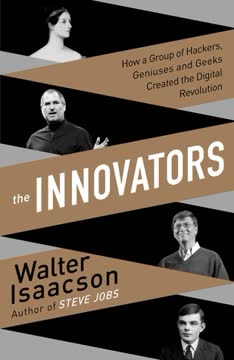Key Takeaways
1. Just-in-Time: The Foundation of Toyota's Production System
"Just-in-time" means that, in a flow process, the right parts needed in assembly reach the assembly line at the time they are needed and only in the amount needed.
Revolutionizing production flow. Just-in-Time (JIT) is the cornerstone of the Toyota Production System, aiming to eliminate waste by producing only what is needed, when it is needed, and in the quantity needed. This approach drastically reduces inventory, minimizes storage costs, and exposes inefficiencies in the production process.
Implementing JIT. To achieve JIT, Toyota:
- Reorganized factory layouts to create a logical flow of materials
- Reduced setup times to allow for smaller batch sizes
- Implemented a pull system where downstream processes signal their needs to upstream processes
- Developed close relationships with suppliers to ensure reliable and timely deliveries
The JIT system requires a high degree of coordination and discipline throughout the supply chain, but its benefits include improved quality, reduced costs, and increased responsiveness to market demands.
2. Autonomation: Intelligent Automation with a Human Touch
Autonomation changes the meaning of management as well. An operator is not needed while the machine is working normally. Only when the machine stops because of an abnormal situation does it get human attention.
Empowering machines and workers. Autonomation, or "automation with a human touch," is the second pillar of the Toyota Production System. It involves equipping machines with the ability to detect abnormalities and stop automatically, preventing the production of defective items and freeing workers to focus on more value-added tasks.
Key aspects of autonomation:
- Automatic detection of defects or abnormalities
- Immediate stoppage when problems occur
- Clear signaling systems (e.g., andon boards) to alert workers
- Empowerment of workers to stop the production line when necessary
This approach not only improves quality but also enhances worker engagement and responsibility. By combining human intelligence with machine efficiency, autonomation creates a more flexible and responsive production system.
3. Elimination of Waste: The Key to Cost Reduction and Efficiency
The Toyota production system, with its two pillars advocating the absolute elimination of waste, was born in Japan out of necessity.
Identifying and eliminating waste. The relentless pursuit of waste elimination is central to the Toyota Production System. Waste, or "muda" in Japanese, is defined as any activity that does not add value to the product or service from the customer's perspective.
Toyota identified seven types of waste:
- Overproduction
- Waiting
- Transportation
- Over-processing
- Inventory
- Motion
- Defects
By systematically identifying and eliminating these wastes, Toyota was able to significantly reduce costs, improve quality, and increase efficiency. This approach requires continuous observation, analysis, and improvement of all processes, fostering a culture of lean thinking throughout the organization.
4. Kanban: A Visual Tool for Managing Production Flow
A kanban always accompanies the goods and thus is the essential communications tool for just-in-time production.
Simplifying production control. Kanban, meaning "signboard" in Japanese, is a visual system used to manage and control the flow of materials in a JIT production environment. It serves as a simple yet effective communication tool between different processes in the production line.
Key elements of the kanban system:
- Cards or signals that authorize production or movement of materials
- Strict rules governing the use of kanban
- Continuous reduction of the number of kanban to expose inefficiencies
Kanban helps prevent overproduction, reduces inventory, and improves the overall flow of materials through the production process. It also empowers workers to manage their own work and promotes a culture of continuous improvement by making problems visible.
5. Continuous Improvement: The Pursuit of Perfection
It is said that improvement is eternal and infinite. It should be the duty of those working with kanban to keep improving it with creativity and resourcefulness without allowing it to become fixed at any stage.
Kaizen culture. Continuous improvement, or "kaizen" in Japanese, is a fundamental principle of the Toyota Production System. It involves making small, incremental changes on a regular basis to improve efficiency, quality, and working conditions.
Key aspects of continuous improvement:
- Engagement of all employees in improvement efforts
- Focus on process rather than results
- Encouragement of experimentation and learning from failures
- Regular reflection and sharing of best practices
This approach fosters a culture of innovation and adaptability, allowing Toyota to continuously evolve its production system and maintain its competitive edge. It also empowers workers at all levels to contribute to the company's success, enhancing job satisfaction and productivity.
6. Production Leveling: Balancing Demand and Capacity
Production leveling is much more advantageous than the planned mass-production system in responding to the diverse demands of the automobile market.
Smoothing production flow. Production leveling, or "heijunka" in Japanese, is the practice of balancing production by both volume and product mix. Instead of producing large batches of a single model, Toyota produces smaller batches of different models on the same line.
Benefits of production leveling:
- Reduced inventory and capital costs
- More flexible response to customer demand
- Smoother utilization of labor and machines
- Reduced burden on upstream processes and suppliers
By implementing production leveling, Toyota was able to achieve greater efficiency and flexibility in its production system, enabling it to better respond to market fluctuations and diverse customer needs.
7. Flexibility in Production: Adapting to Market Changes
The Toyota production system has been thorough in removing waste, inconsistency, and excess from production. It is by no means a passive or defensive management system.
Agility in manufacturing. The Toyota Production System emphasizes flexibility to adapt quickly to changing market conditions. This flexibility is achieved through various means, including multi-skilled workers, adaptable machinery, and quick changeover techniques.
Key elements of production flexibility:
- Cross-training workers to perform multiple tasks
- Designing machinery for quick setup changes
- Implementing small-lot production
- Maintaining close relationships with suppliers for responsive sourcing
This flexibility allows Toyota to efficiently produce a wide variety of models in varying quantities, responding effectively to market demand without excessive inventory or capacity.
8. The Power of Observation and Questioning
Stand on the production floor all day and watch - you will eventually discover what has to be done. I cannot emphasize this too much.
Genchi Genbutsu. This principle, meaning "go and see for yourself," emphasizes the importance of direct observation in problem-solving and improvement. Ohno encouraged managers and engineers to spend time on the factory floor, observing processes firsthand and asking questions.
The "Five Whys" technique:
- Identify a problem
- Ask "Why?" five times to dig deeper into the root cause
- Each answer forms the basis for the next question
- Continue until the root cause is identified
- Develop and implement countermeasures
This approach promotes a deeper understanding of processes and challenges, leading to more effective solutions and improvements.
9. Respect for People: The Human Element in Manufacturing
Management's responsibility is to identify excess manpower and utilize it effectively. Hiring people when business is good and production is high just to lay them off or recruiting early retirees when recession hits are bad practices.
Valuing human capital. The Toyota Production System places great emphasis on respecting and developing people. This includes not only workers but also suppliers and customers. The system recognizes that engaged, skilled, and empowered workers are crucial for continuous improvement and long-term success.
Key aspects of respecting people:
- Job security and long-term employment
- Continuous training and skill development
- Empowerment to stop production and suggest improvements
- Teamwork and mutual assistance
By investing in its people and fostering a culture of respect and collaboration, Toyota has been able to maintain high levels of productivity and innovation, even in challenging economic conditions.
10. Learning from Ford: Adapting and Evolving Mass Production
I believe Ford was a born rationalist - and I feel more so every time I read his writings. He had a deliberate and scientific way of thinking about industry in America.
Evolving mass production. While Toyota learned much from Ford's mass production system, it also recognized the need to adapt these principles to suit Japan's unique economic and cultural context. Ohno studied Ford's ideas closely but developed a more flexible and efficient system suited to producing a variety of models in smaller quantities.
Key adaptations of Ford's system:
- Emphasis on flow rather than large batch sizes
- Focus on eliminating all forms of waste
- Development of flexible production lines
- Implementation of pull production based on actual demand
By building on Ford's foundations while innovating to meet new challenges, Toyota created a production system that has significantly influenced manufacturing practices worldwide.
Last updated:
FAQ
What's "Toyota Production System: Beyond Large-Scale Production" about?
- Overview of TPS: The book by Taiichi Ohno explores the Toyota Production System (TPS), a manufacturing methodology focused on efficiency and waste reduction.
- Historical Context: It provides insights into how TPS evolved in response to Japan's post-war economic conditions and the oil crisis of the 1970s.
- Core Principles: The book emphasizes the principles of just-in-time production and autonomation, or automation with a human touch.
- Practical Application: It includes practical examples and case studies of how TPS has been implemented in Toyota and other companies.
Why should I read "Toyota Production System: Beyond Large-Scale Production"?
- Learn from the Best: Taiichi Ohno is credited with creating the TPS, which has revolutionized manufacturing worldwide.
- Efficiency and Waste Reduction: The book offers valuable insights into reducing waste and improving efficiency in production processes.
- Broader Business Application: While focused on manufacturing, the principles can be applied to various business operations.
- Historical Insight: It provides a historical perspective on how Toyota became a leader in the automotive industry.
What are the key takeaways of "Toyota Production System: Beyond Large-Scale Production"?
- Elimination of Waste: The primary goal of TPS is to eliminate waste in all forms, including overproduction, waiting, and defects.
- Just-In-Time Production: Producing only what is needed, when it is needed, to minimize inventory and reduce costs.
- Autonomation: Integrating human intelligence into machines to prevent defects and improve efficiency.
- Continuous Improvement: Emphasizes the importance of ongoing improvement and adaptation to changing market conditions.
What is Just-In-Time production according to Taiichi Ohno?
- Definition: Just-In-Time (JIT) is a production strategy that aims to improve a business's return on investment by reducing in-process inventory and associated carrying costs.
- Demand-Driven: It involves producing only what is needed, when it is needed, based on actual customer demand.
- Inventory Reduction: JIT helps in minimizing inventory levels, thereby reducing storage costs and waste.
- Synchronization: It requires synchronization of all production processes to ensure smooth flow and timely delivery.
How does Taiichi Ohno define Autonomation?
- Automation with a Human Touch: Autonomation refers to machines that can detect and stop when an abnormality occurs, integrating human intelligence into automation.
- Prevention of Defects: It prevents the production of defective products by stopping the process when an issue is detected.
- Efficiency Improvement: Allows one worker to manage multiple machines, increasing production efficiency.
- Historical Origin: The concept originated from Toyoda Sakichi's invention of an auto-activated loom.
What are the "Five Why's" in the Toyota Production System?
- Root Cause Analysis: The "Five Why's" is a problem-solving technique used to explore the cause-and-effect relationships underlying a particular problem.
- Asking Why: By asking "why" five times, you can uncover the root cause of a problem rather than just addressing its symptoms.
- Example Application: The book provides examples, such as identifying why a machine stopped, to illustrate the method.
- Foundation of TPS: This technique is a fundamental part of the scientific approach that underpins the Toyota Production System.
What is Kanban and its role in TPS?
- Visual Management Tool: Kanban is a scheduling system for lean and just-in-time production, using cards to signal the need to move materials within a production facility.
- Information Flow: It facilitates communication between different processes, ensuring that parts are produced and delivered just in time.
- Prevention of Overproduction: By controlling the flow of materials, Kanban helps prevent overproduction and excess inventory.
- Flexibility and Adaptation: The system is adaptable and can be used to manage production even when demand is unstable.
How does Taiichi Ohno view the relationship between teamwork and individual skill?
- Teamwork Importance: Ohno emphasizes that manufacturing is a team effort, similar to sports, where coordination and harmony are crucial.
- Individual Skill: While individual skills are important, they must be integrated into the team's efforts to achieve overall success.
- Baton Passing Analogy: He uses the analogy of a relay race to describe how work should be passed smoothly between team members.
- Continuous Practice: Like sports, continuous practice and training are essential for improving teamwork and individual skills.
What is the significance of "Production Leveling" in TPS?
- Smoothing Production: Production leveling, or heijunka, involves smoothing out production to avoid peaks and valleys in the manufacturing process.
- Demand Fluctuation Management: It helps manage fluctuations in demand by producing a consistent mix of products.
- Efficiency Improvement: By leveling production, companies can reduce waste and improve efficiency across the supply chain.
- Market Adaptation: It allows Toyota to adapt to diverse market demands without sacrificing efficiency.
What does Taiichi Ohno mean by "Management by Ninjutsu"?
- Creative Management: Ohno uses the term "ninjutsu" to describe a management style that is creative and adaptable, akin to the art of invisibility.
- Beyond Arithmetic: He argues that management should not rely solely on numbers and calculations but also on intuition and creativity.
- Training and Skill: Emphasizes the importance of training and developing skills to achieve management goals.
- Cultural Reflection: The concept reflects Japanese cultural values and the unique approach of the Toyota Production System.
What are the best quotes from "Toyota Production System: Beyond Large-Scale Production" and what do they mean?
- "The basis of the Toyota production system is the absolute elimination of waste." This quote highlights the core principle of TPS, focusing on waste reduction to improve efficiency.
- "Just-in-time means that, in a flow process, the right parts needed in assembly reach the assembly line at the time they are needed and only in the amount needed." It explains the essence of JIT, emphasizing timely and precise production.
- "Autonomation means transferring human intelligence to a machine." This quote underscores the importance of integrating human judgment into automated processes to prevent defects.
- "A production line that does not stop is either a perfect line or a line with big problems." It suggests that stopping the line to address issues is crucial for continuous improvement and quality control.
How does "Toyota Production System: Beyond Large-Scale Production" compare to the Ford System?
- Mass Production vs. Lean Production: The Ford system focuses on mass production, while the Toyota system emphasizes lean production and waste reduction.
- Lot Sizes: Ford's system involves large lot sizes, whereas Toyota's system advocates for small lot sizes and quick setups.
- Flow and Synchronization: Toyota's system synchronizes production processes to ensure a smooth flow, unlike the batch production in the Ford system.
- Adaptability: The Toyota system is more adaptable to changing market demands, making it suitable for periods of low growth.
Review Summary
Toyota Production System by Taiichi Ohno is highly regarded as a seminal work on lean manufacturing. Readers praise its concise presentation of key concepts like just-in-time production, kanban, and waste elimination. Many find it enlightening for understanding the origins of modern management practices, including agile methodologies. While some note the writing can be repetitive or difficult to follow at times, most agree it's an essential read for those interested in operations, process improvement, and business efficiency. The book's historical context and philosophical approach are frequently highlighted as valuable aspects.
Similar Books






Download PDF
Download EPUB
.epub digital book format is ideal for reading ebooks on phones, tablets, and e-readers.




